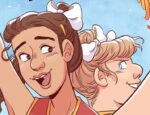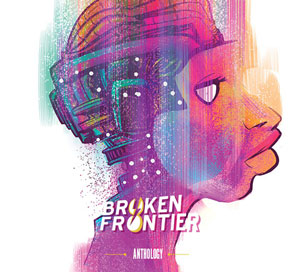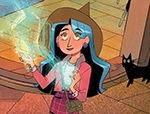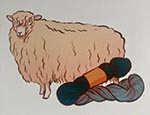Paddy Wolfe is a gender-fluid comics maker who, as they put it themself, creates stories “about nature, queerness, hope, the things I care about”. They might have added that their narratives are also increasingly saturated with with magic and mythology, particularly Celtic mythology.
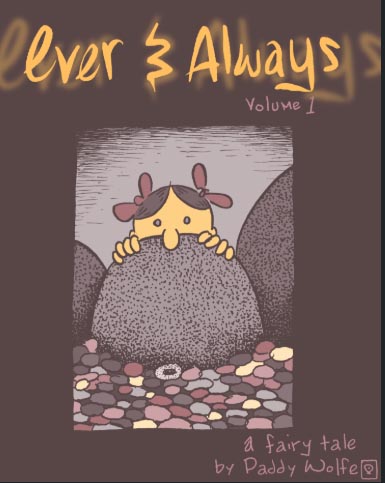
I’ve been following their work for a while now, since Dry Bones, a spooky and humorous story about a girl who strikes up a friendship with a floating skull. Next came Pieces of Lingering Dust, about non-binary teenagers struggling to fit in at school (not knowing which toilet to use, for example, and then being bullied for queerness). There were supernatural aspects to this, with one of the characters turning herself into a rabbit by witchcraft, and another casting a spell to make the bully’s hair fall out; but the school setting kept the story tied to everyday life. With Ever & Always, however, which is now in its third volume, we are more thoroughly in fantasy territory, and large parts of the action take place in Druidia, the Celtic fairyland.
Volume 1 of Ever & Always is a good starting-point for new readers. The four main characters are all carried forward from Pieces of Lingering Dust, but you don’t need any prior knowledge of them to follow the story. Two of the four – Grace and E_ – are abducted by a garbage monster, and carried off through a portal into Druidia. The other two – Kilroy and Little Q – set out to find and rescue them. In the course of their quest, we gradually find out more about the characters, their origins, and their connections with each other.
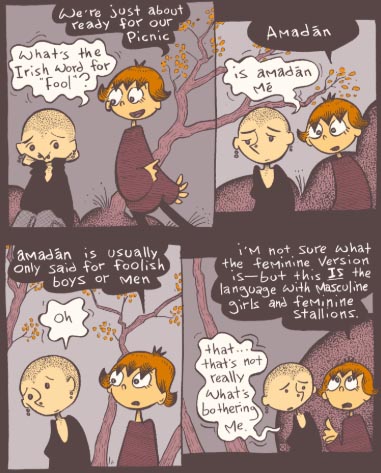
To some extent this is a wish-fulfillment narrative. The main characters initially seem like losers and outsiders; they doubt themselves and struggle to find their feet amongst their peers; but they gradually learn to have faith in themselves, and go on to discover that they have secret powers and fascinating back-stories. Wish-fulfillment narrative are commonplace in the fantasy genre, but in the case of Ever & Always there is an added dimension, because the four main characters are all gender-fluid, and as the story develops they form a tight friendship group which is bound to have a powerful appeal to non-binary readers. Their relationships have their ups and downs – they can be jealous and difficult with each other, and sometimes end up in shouting matches which lead in turn to tearful reconciliations – but that’s all part of the bonding process.
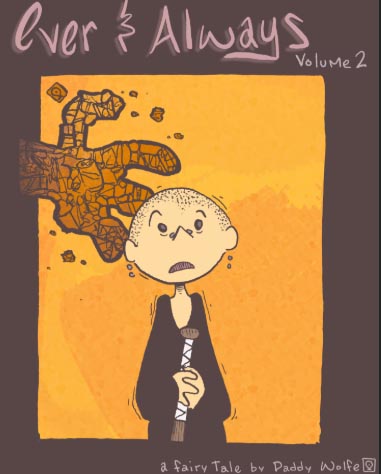
Another part of the story’s appeal is that we gradually learn more and more about the magic and mythology of Druidia, with which all the characters are involved or become involved in one way or another. Readers who are fond of Celtic folk-tales will find themselves recognising a lot of the material. Wolfe even goes so far as to have the characters talking to each other in Gaelic some of the time, although this never becomes an impediment to our understanding of the narrative.
Unlike many other fantasies, Ever & Always doesn’t rely on big heroic confrontations to give the story impetus. There are certainly elements of jeopardy and suspense – we learn early on that the quirkiest and most lovable of the four main characters, Kilroy, is ‘fading’ because they have forgotten their true name, and this plot-strand becomes more and more prominent as the story unfolds. But the main narrative impetus comes from a sense of discovery, a process of exploring hidden secrets and mysteries, both about the characters and about the mythological world in which they find themselves.
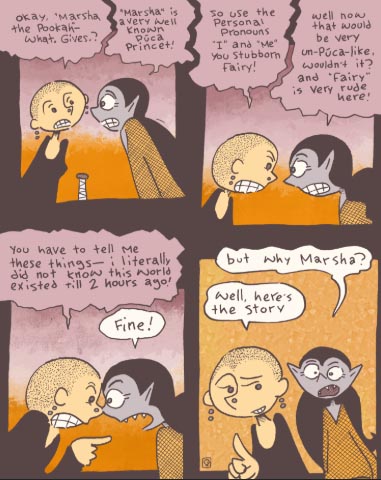
This being the case, there is a lot of explication, and panels displaying just two characters surrounded by an array of speech balloons are commonplace. But this is less of a problem than it would be in other hands, because Paddy Wolfe always manages to keep things lively even when they’re at their most talky: the characters move about, change facial expressions, interact with each other and gesticulate while they’re talking. There are also frequent sparks of humour, which always help.
Wolfe also has a very uncluttered way of drawing: there’s never too much detail in the backgrounds, which favour rich colours and patterns or textures rather than obsessive intricacy; and the protagonists are firmly delineated with a few simple lines, always distinct from each other and for that reason always recognisable.
In many ways these comics are very un-Manga-like, but in one way they resemble Manga quite strongly: the emotions of the characters always show very plainly in their faces. They’re never deadpan. They’re terrified, angry, tearful, loving and hilarious at different times, and this emotional intensity is part of what makes us identify with them and live through the story so vividly with them.
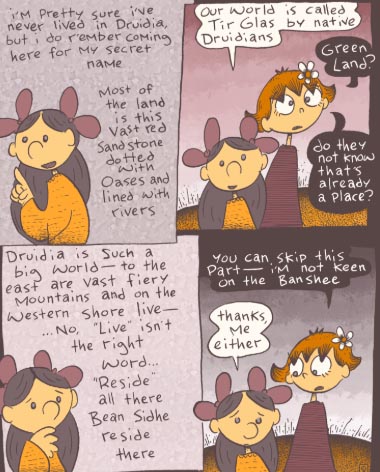
Wolfe’s focus on gender-fluidity may seem like an odd combination with a love of magic, mythology and fantasy. In some cases – for example in the sword-and-sorcery category – fantasy can be used to exaggerate or reinforce gender stereotypes. But the myth and magic world is also a world of transformations, where things (and identities) are not fixed into a single form or a single role. It is intimately connected to both nature and dreams. In Wolfe’s version, as the characters in Ever & Always are drawn into the land of Druidia, they are moving into a realm where things like gender-roles are much less fixed, and gender-fluidity is much less controversial and polarising than it is, unfortunately, in our own world.
Whatever their settings, Wolfe’s stories are ultimately about self-discovery, about people finding themselves and learning to value themselves. They are about friendship, tolerance and kindness. They’re the type of stories we need now more than ever.
Paddy Wolfe • Self-published online
Review by Edward Picot








